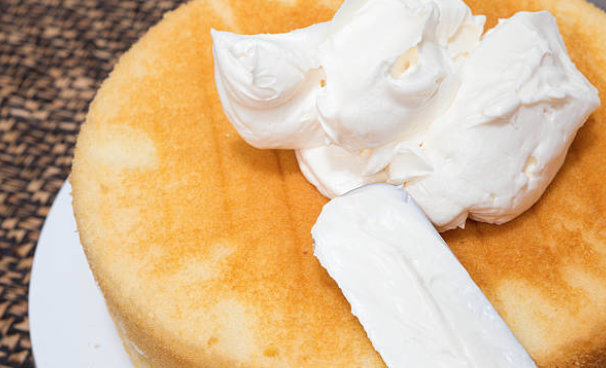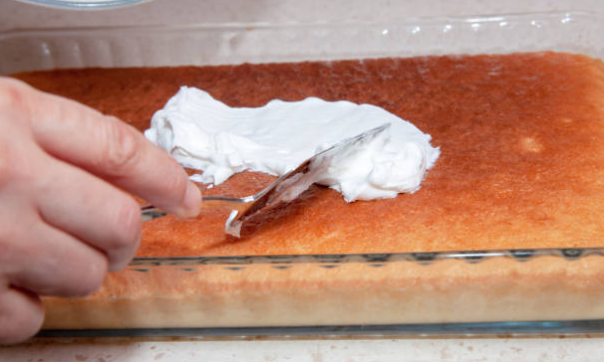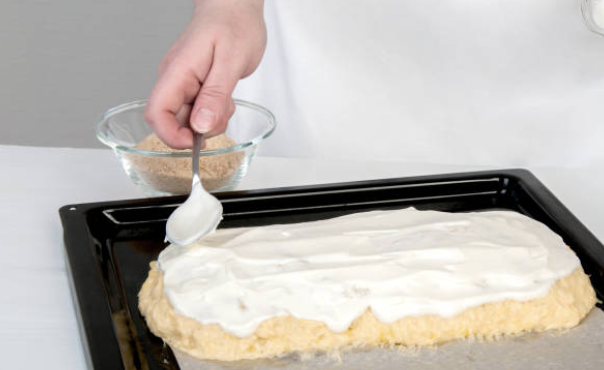Table of Contents:
- Why Does Cream Cheese Filling Become Runny?
- Methods to Make Cream Cheese Filling Thicker
- Best Practices to Prevent Runny Cream Cheese Filling
- Variations for Thicker Cream Cheese Fillings
- Recent Recipes
- Frequently Asked Questions (FAQs)
- Conclusion
How Do You Make Cream Cheese Filling Thicker?
Cream cheese filling is a versatile and delicious addition to cakes, pastries, cookies, and other desserts. Whether you’re making a cheesecake, frosting, or stuffed pastries, achieving the right consistency is essential. However, cream cheese filling can sometimes become too thin or runny, making it difficult to spread or pipe. This guide will walk you through effective ways to make cream cheese filling thicker and ensure you achieve the perfect consistency for your recipes.
In this article, we’ll explore different methods to thicken cream cheese filling, including tips for common recipes like cheesecakes and frostings. You’ll also learn how to prevent the filling from becoming runny in the first place, which can save you time and effort in the kitchen.
Why Does Cream Cheese Filling Become Runny?

Before diving into how to thicken cream cheese filling, it’s essential to understand why it becomes runny in the first place. Several factors can contribute to this issue:
- Too Much Liquid: Adding too much milk, cream, or liquid flavorings can thin out the filling.
- Overmixing: Cream cheese can break down when mixed too much, losing its structure and firmness.
- Warm Ingredients: Using cream cheese or butter that is too warm can cause the filling to lose its thickness.
- High Humidity: Hot or humid kitchen conditions can make it difficult for cream cheese to hold its shape.
Now, let’s explore the best ways to thicken cream cheese filling when it becomes too soft.
Methods to Make Cream Cheese Filling Thicker

1. Chill the Filling
The simplest and most effective way to thicken cream cheese filling is to refrigerate it. Chilling allows the fats in the cream cheese and butter to firm up, giving the mixture more stability.
- Step 1: Place the cream cheese filling in a covered container.
- Step 2: Refrigerate for at least 30 minutes to 1 hour.
- Step 3: Check the consistency; if it’s still too soft, leave it in the refrigerator for a little longer.
This method is ideal for fillings that became runny due to warm kitchen conditions or overmixing. By letting the fats solidify, you’ll achieve a thicker texture that’s easier to work with.
2. Add More Powdered Sugar
Adding powdered sugar is a common way to thicken cream cheese filling while keeping it sweet and smooth. This method works especially well for frostings or dessert fillings that can handle additional sweetness.
- Step 1: Gradually sift in 1/4 to 1/2 cup of powdered sugar to prevent lumps.
- Step 2: Mix the sugar into the cream cheese filling on low speed until smooth.
- Step 3: Taste and adjust sweetness if necessary.
This method is best for recipes that require a sweetened filling, such as cakes or cookies. However, be cautious not to add too much sugar, as it can alter the flavor.
3. Incorporate Cornstarch or Flour
Cornstarch or all-purpose flour can be used to thicken cream cheese filling without adding sweetness. Both of these ingredients absorb excess moisture, creating a firmer texture.
- Step 1: Add 1 to 2 tablespoons of cornstarch or flour to the cream cheese filling.
- Step 2: Mix on low speed until the thickener is fully incorporated.
- Step 3: Continue mixing until the filling thickens to your desired consistency.
Cornstarch is often preferred because it’s flavorless and works quickly. Flour can also work but may leave a slightly grainy texture if not cooked or blended well.
For more detailed tips on thickening different types of fillings, check out our baking techniques and tips for better results.
4. Use Gelatin for No-Bake Cheesecakes
If you’re making a no-bake cheesecake filling, gelatin is an excellent way to achieve a firmer texture without altering the flavor or sweetness.
- Step 1: Dissolve 1 teaspoon of unflavored gelatin in 2 tablespoons of warm water.
- Step 2: Allow the gelatin to sit for a few minutes until it blooms (thickens).
- Step 3: Gently fold the gelatin into the cream cheese filling, mixing until fully combined.
- Step 4: Refrigerate the filling for at least 1 hour to set.
This method is ideal for no-bake recipes where the filling needs to set without the help of eggs or baking. Gelatin ensures that the filling holds its shape while maintaining a creamy texture.
5. Reduce the Liquid Ingredients
In some cases, the best solution is to reduce the amount of liquid used in the recipe. By cutting back on cream, milk, or liquid flavorings, you can naturally achieve a thicker filling.
- Step 1: Reduce the amount of heavy cream, milk, or other liquids in your recipe by half.
- Step 2: Add the liquid slowly as needed, ensuring the filling remains thick and stable.
This method works well for recipes where too much liquid has been added. It also helps when you want to avoid sweetening the filling with extra sugar.
For more ideas on customizing cream cheese fillings for different recipes, check out our creative recipe ideas.
Best Practices to Prevent Runny Cream Cheese Filling

Rather than always fixing a runny cream cheese filling, it’s best to follow these practices to prevent it from becoming too thin in the first place:
- Use Full-Fat Cream Cheese: Low-fat or reduced-fat cream cheese tends to be softer and less stable. Always use full-fat cream cheese for a thicker, creamier filling.
- Soften Ingredients Properly: Ensure your cream cheese and butter are softened to room temperature before mixing. Cold ingredients can cause lumps, while overly warm ingredients can make the filling too soft.
- Avoid Overmixing: Once you’ve added the eggs (for baked fillings), mix the ingredients gently. Overmixing incorporates too much air, which can cause the filling to collapse.
- Measure Liquids Carefully: Be precise when adding liquid ingredients. Start with smaller amounts and add more gradually to ensure the filling remains thick.
By following these preventive steps, you’ll save time and effort when making any type of cream cheese filling.
Variations for Thicker Cream Cheese Fillings
Different desserts require different textures. Here are some popular variations of cream cheese filling that can be made thicker or adjusted depending on the recipe:
1. Thicker Cheesecake Filling
- Best Method: Use cornstarch or gelatin to thicken cheesecake filling, especially for no-bake versions. This ensures the filling sets properly without adding sweetness.
- Where to Use: Ideal for traditional or no-bake cheesecakes that need a stable, sliceable texture.
2. Firm Frosting for Cakes
- Best Method: Add extra powdered sugar to cream cheese frosting to make it thicker for piping or spreading.
- Where to Use: Perfect for decorating cakes, cupcakes, or cookies that require a sturdy frosting.
3. Savory Cream Cheese Filling
- Best Method: Use less liquid and avoid adding sugar when making a savory cream cheese filling for dishes like stuffed vegetables or savory pastries.
- Where to Use: Works well in savory dishes where sweetness isn’t desired, such as in savory quiches or stuffed mushrooms.
For more inspiration on using cream cheese fillings in different desserts, browse our collection of dessert guides.
Recent Recipes
Frequently Asked Questions (FAQs)
1. Can I freeze cream cheese filling to thicken it?
Yes, you can freeze cream cheese filling for a short time to firm it up. However, freezing for too long can change the texture, making it grainy or watery once thawed. If you need to thicken it, try refrigerating instead of freezing.
2. Why is my cream cheese filling too runny after adding whipped cream?
Adding whipped cream can sometimes loosen the filling. To avoid this, fold the whipped cream gently into the mixture and avoid overmixing. You can also reduce the amount of whipped cream in the recipe for a thicker filling.
3. How can I make cream cheese filling thicker without adding sugar?
To thicken cream cheese filling without adding extra sweetness, use cornstarch or gelatin, both of which absorb excess moisture without affecting the flavor. You can also reduce the amount of liquid used in the recipe.
4. Is it possible to use flour to thicken cream cheese filling?
Yes, all-purpose flour can be used to thicken cream cheese filling, though it may leave a slightly grainy texture. Cornstarch is a better option if you want a smoother consistency.
5. Can I add cocoa powder to thicken cream cheese filling?
Yes, cocoa powder can help thicken the filling while also adding a rich, chocolatey flavor. Just be mindful that adding too much may dry out the mixture, so balance it with other ingredients.
Conclusion
Achieving the perfect consistency for cream cheese filling is crucial for making your desserts look and taste their best. Whether you’re working with cheesecakes, frostings, or other creamy fillings, knowing how to make cream cheese filling thicker can save your recipe from being too runny. Techniques like chilling, adding powdered sugar, cornstarch, or gelatin, and reducing liquid ingredients can all help firm up the filling. By following these tips and avoiding common mistakes, you can ensure a smooth, thick, and delicious cream cheese filling for any dessert.

